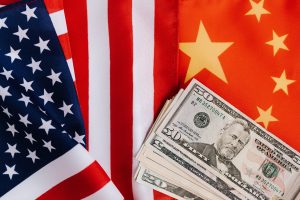In the ever-evolving landscape of global economics, a notable ascent has caught the attention of market observers and analysts alike. As we navigate the intricate web of financial news, a narrative of economic elevation emerges, painting a picture of prosperity amid challenges. This feature story aims to unravel the threads of this remarkable climb, exploring the factors driving economic growth and the implications for businesses and individuals.
The Soaring Markets: Bullish Trends and Investor Confidence
One cannot ignore the robust performance of financial markets in recent months. Stock indices have been scaling new heights, reflecting a bullish sentiment among investors. Behind this surge are a combination of factors, from favorable macroeconomic indicators to breakthroughs in technology and innovation. Companies driving the Fourth Industrial Revolution have seen their stock prices soar, fostering a sense of optimism about the future.
Amidst this upward trajectory, questions arise about the sustainability of such growth. Are we witnessing a genuine economic boom, or is this a bubble waiting to burst? To answer these questions, it is essential to delve into the fundamental indicators that underpin the market’s rise. Analysts point to strong corporate earnings, low interest rates, and supportive fiscal policies as key contributors. However, caution is advised, as historical patterns suggest that unchecked exuberance can lead to unforeseen consequences.

Job Creation and Wage Growth: The Ripple Effect of Economic Elevation
A rising tide lifts all boats, and the current economic elevation is no exception. Job creation has been a notable outcome of the flourishing markets. Companies flush with confidence are expanding their operations, hiring new talent, and contributing to a decline in unemployment rates. This, in turn, fuels consumer spending, creating a positive feedback loop that sustains economic momentum.
Wage growth, long stagnant in many regions, has also started to pick up. As businesses compete for skilled workers in a tightening labor market, employees are beginning to see more substantial paychecks. The implications of this trend extend beyond individual bank accounts; increased consumer spending stimulates demand for goods and services, further propelling economic growth.
The Role of Government Policies: Navigating Risks and Rewards
Behind the scenes of this economic elevation are the policies implemented by governments around the world. Central banks have played a pivotal role in shaping the financial landscape, using a mix of monetary tools to support growth and stabilize economies. However, the delicate balance between stimulus and inflationary pressures poses a challenge that policymakers must navigate with precision.
In this context, the debate over the appropriate role of government in the economy is reignited. As stimulus measures prop up markets, questions arise about their long-term impact and the potential for unintended consequences. Striking the right balance between intervention and market forces becomes crucial to ensuring sustained economic elevation without fostering an environment prone to instability.
Conclusion: Navigating the Peaks of Prosperity
As we navigate the peaks of prosperity in financial news, it is essential to approach the narrative with a discerning eye. Economic elevation brings with it both opportunities and risks, and understanding the intricate interplay of factors is crucial for investors, businesses, and policymakers alike.
In the coming months, the story of economic ascent will continue to unfold. Analysts will scrutinize economic indicators, policymakers will calibrate their responses, and investors will navigate the dynamic landscape. As a society, our collective journey up the peaks of prosperity requires a careful and informed approach, ensuring that the climb is sustainable, inclusive, and mindful of the potential pitfalls along the way.




